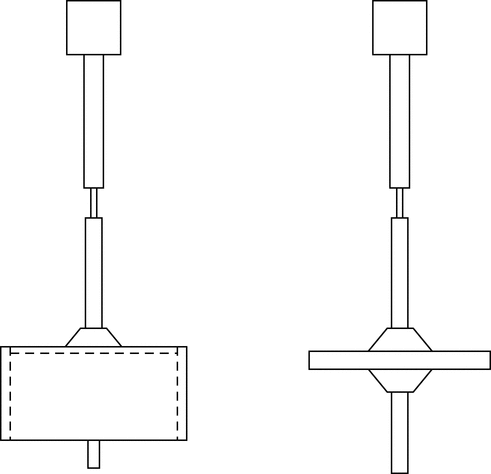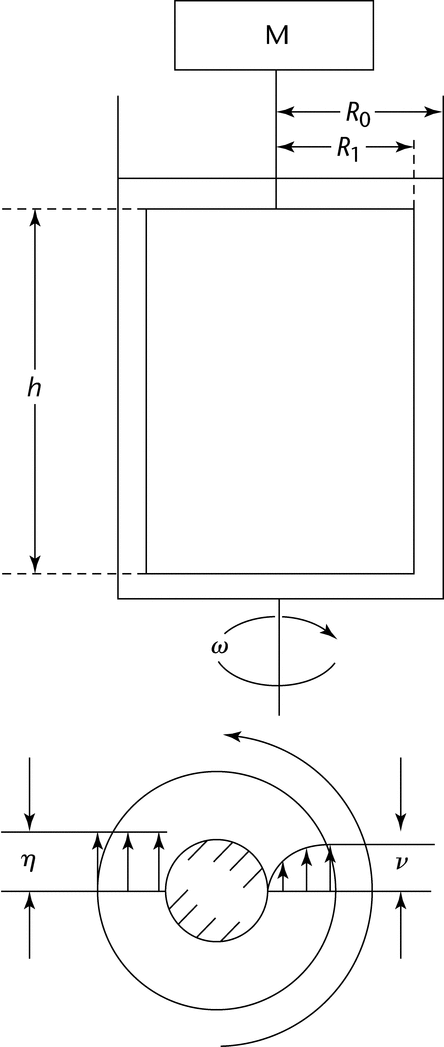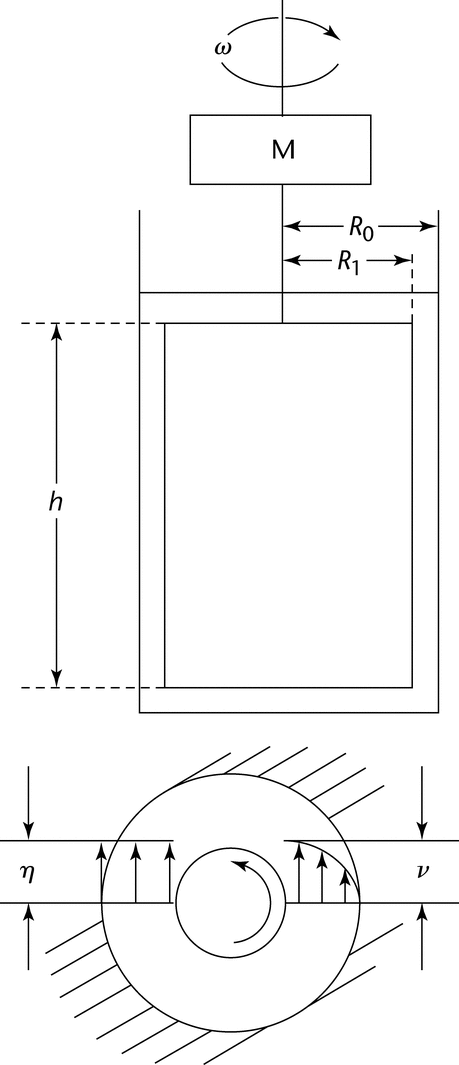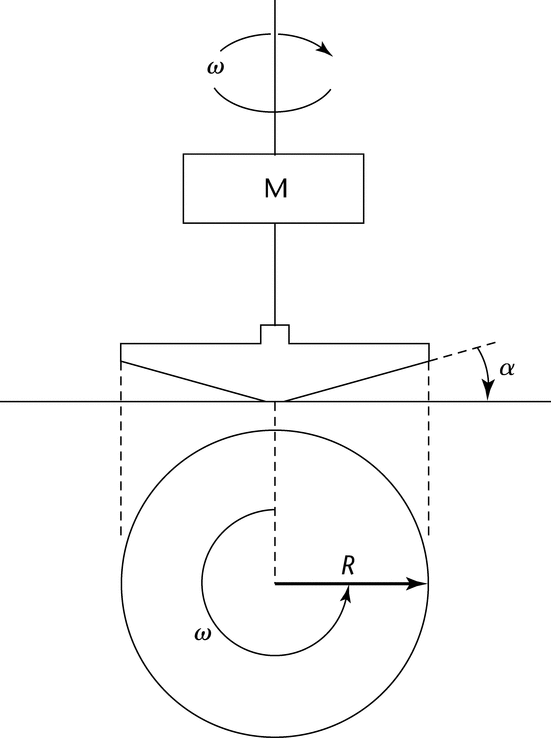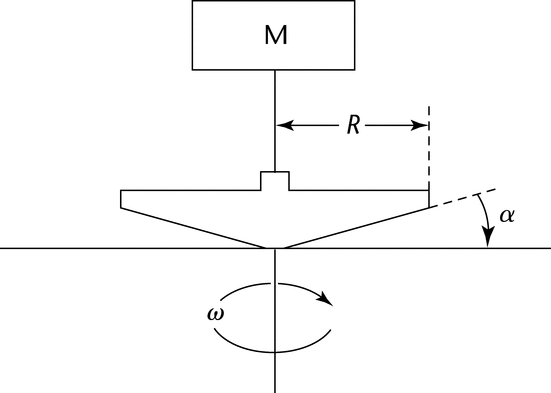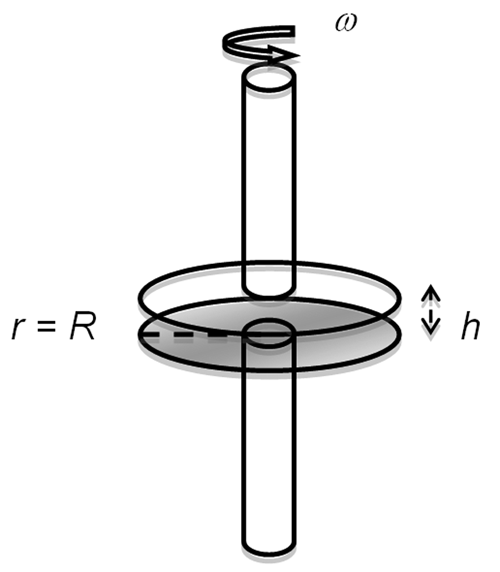Change to read:
Change to read:
The principle of the method is to measure the force (torque) acting on a rotor when it rotates at a constant angular velocity

 USP38
USP38

 USP38
USP38
 , unless otherwise specified in the individual monograph.
, unless otherwise specified in the individual monograph.

 1911
1911 .
.
 USP38
USP38
Change to read:
• Method I.
Apparatus:
In the spindle

 USP38
USP38

Other spindle type viscometers may be used provided that the accuracy and precision is NLT that obtained with the viscometers described in this chapter. USP38
USP38
Procedure:

 USP38
USP38

 USP38
USP38
- Size and geometry of spindle
-
Angular velocity

or rotational speed  USP38
USP38
of the spindle - Temperature of the test substance
The preparation of the test specimen, including its temperature equilibration, is specified in each individual monograph. Follow the instrument manufacturer’s recommendations regarding sample loading, spindle selection, and

 USP38
USP38
Calibration

 USP38
USP38
A

 USP38
USP38
Generally, calibration, operation, and cleaning of

 USP38
USP38
Change to read:
• Method II. Concentric Cylinder Rheometers
Apparatus:
In the concentric cylinder rheometer, the apparent viscosity is determined by placing the liquid in the gap between the inner cylinder and the outer cylinder. Both controlled-stress and controlled-rate rotational rheometers are available commercially in configurations with absolute geometries (e.g., very small annular gaps between concentric cylinders) that

 USP38
USP38
|
| = | =
|
|
| = | =
|
|
| = | =
|
|
| = | =
|
|
| = | =
|
|
| = | =
|
|
| = | =
|
Procedure:
Place a sufficient quantity of

 USP38
USP38

 USP38
USP38
Change to read:
• Method III. Cone-and-Plate Rheometers
Apparatus:
In the cone-and-plate rheometer, the liquid is introduced into the

 USP38
USP38

 USP38
USP38
Procedure:
Proceed as directed for Method II. Concentric Cylinder Rheometers.
Add the following:
•
Apparatus:
 (Figure 7).
(Figure 7).
Variables in Figure 7 are defined as:
| = | = angular velocity (radians/s) | |
| R | = | = radius of the plate (m) |
| h | = | = distance between the two parallel plates (m) |
In contrast to the cone-and-plate rheometer, the shear rate between parallel plates increases with distance from the origin of the axis of rotation due to the increasing linear speeds for a given angular velocity with a constant gap. Thus, an average shear rate is obtained. Nonetheless, some advantages of the parallel plate rheometer include ease of sample loading (especially for very viscous liquids and soft semisolids), and suitability for suspensions of particulates. For suspensions, the gap should be set high enough to avoid grinding particles between the plates. Parallel plates have a user-definable gap (within practical limits) and therefore, in the absence of large particles, may be used at narrower gaps. As with cone-and-plate rheometers, evaporative loss of solvent can markedly affect the viscosity of the sample, so adequate precautions need to be taken to minimize solvent loss.
Procedure:
 USP38
USP38
Auxiliary Information—
Please check for your question in the FAQs before contacting USP.
| Topic/Question | Contact | Expert Committee |
|---|---|---|
| General Chapter | Hong Wang, Ph.D.
Senior Scientific Liaison (301) 816-8351 |
(GCPA2010) General Chapters - Physical Analysis |
USP38–NF33 Page 681
Pharmacopeial Forum: Volume No. 39(6)





